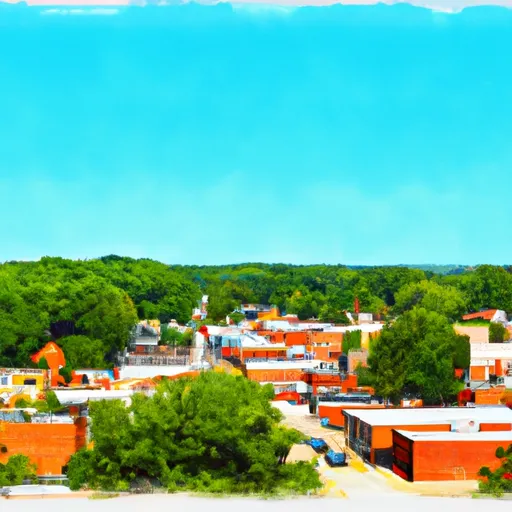-
 Snoflo Premium
Snoflo Premium
Get unlimited access to all our content
With no Ad interruptions! - Start Your Free Trial Login with existing account
Fleming
Eden Index
Climate
8.0
•
Recreation
5.2
•
Community
•
Safeguard
5.0/10

Fleming, Georgia is a small town located in Liberty County in the southeastern region of the state. The climate in Fleming is characterized by hot, humid summers and mild winters with moderate rainfall. Hydrology constituents in the area include the Altamaha River, which runs along the western edge of the county, and several smaller creeks and streams. Outdoor recreation opportunities in Fleming include fishing and boating on the Altamaha River, as well as hiking and camping in nearby parks and forests such as Fort Stewart and the Walthourville Nature Preserve. Overall, Fleming offers a serene and natural environment for those looking to escape the hustle and bustle of city life.
What is the Eden Index?
The Snoflo Eden Index serves as a comprehensive rating system for regions, evaluating their desirability through a holistic assessment of climate health, outdoor recreation opportunities, and natural disaster risk, acknowledging the profound impact of these factors on livability and well-being.
Climate Health Indicator (CHI): 8.0
Fleming receives approximately
1230mm of rain per year,
with humidity levels near 86%
and air temperatures averaging around
19°C.
Fleming has a plant hardyness factor of
8, meaning
plants and agriculture in this region tend to thrive here all year round.
By considering the ideal temperature range, reliable water supplies, clean air, and stable seasonal rain or snowpacks, the Climate Health Indicator (CHI) underscores the significance of a healthy climate as the foundation for quality living.
A healthy climate is paramount for ensuring a high quality of life and livability in a region, fostering both physical well-being and environmental harmony. This can be characterized by ideal temperatures, reliable access to water supplies, clean air, and consistent seasonal rain or snowpacks.
Weather Forecast
Streamflow Conditions
Ogeechee
Area Rivers
Ogeechee
Snowpack Depths
Ogeechee
Reservoir Storage Capacity
Ogeechee
Groundwater Levels
Recreational Opportunity Index (ROI): 5.2
The Recreational Opportunity Index (ROI) recognizes the value of outdoor recreational options, such as parks, hiking trails, camping sites, and fishing spots, while acknowledging that climate plays a pivotal role in ensuring the comfort and consistency of these experiences.
Access to outdoor recreational opportunities, encompassing activities such as parks, hiking, camping, and fishing, is crucial for overall well-being, and the climate plays a pivotal role in enabling and enhancing these experiences, ensuring that individuals can engage in nature-based activities comfortably and consistently.
Camping Areas
| Campground | Campsites | Reservations | Toilets | Showers | Elevation |
|---|---|---|---|---|---|
| Crooked River State Park | None | 14 ft | |||
| Jekyll Island County Park | None | 18 ft | |||
| Blythe Island Regional Park | None | 11 ft | |||
| Altamaha County Park | 43 | 12 ft | |||
| Fort McAllister State Park | None | 11 ft | |||
| Sea Camp - Cumberland Island Natl Seashore | 16 | 6 ft | |||
| Barrington County Park | None | 22 ft | |||
| Fort Clinch State Park | None | 14 ft | |||
| Little Talbot Island State Park | None | 15 ft | |||
| Eagle Hammock RV Military - Kings Bay NSB | None | 19 ft |
Nearby Fishing
Catastrophe Safeguard Index (CSI):
The Catastrophe Safeguard Index (CSI) recognizes that natural disaster risk, encompassing floods, fires, hurricanes, and tornadoes, can drastically affect safety and the overall appeal of an area.
The level of natural disaster risk in a region significantly affects safety and the overall livability, with climate change amplifying these risks by potentially increasing the frequency and intensity of events like floods, fires, hurricanes, and tornadoes, thereby posing substantial challenges to community resilience and well-being.
Community Resilience Indicator (CRI):
The Community Resilience Indicator (CRI) recognizes that education, healthcare, and socioeconomics are crucial to the well-being of a region. The CRI acknowledges the profound impact of these elements on residents' overall quality of life. By evaluating educational resources, healthcare accessibility, and economic inclusivity, the index captures the essential aspects that contribute to a thriving community, fostering resident satisfaction, equity, and social cohesion.

